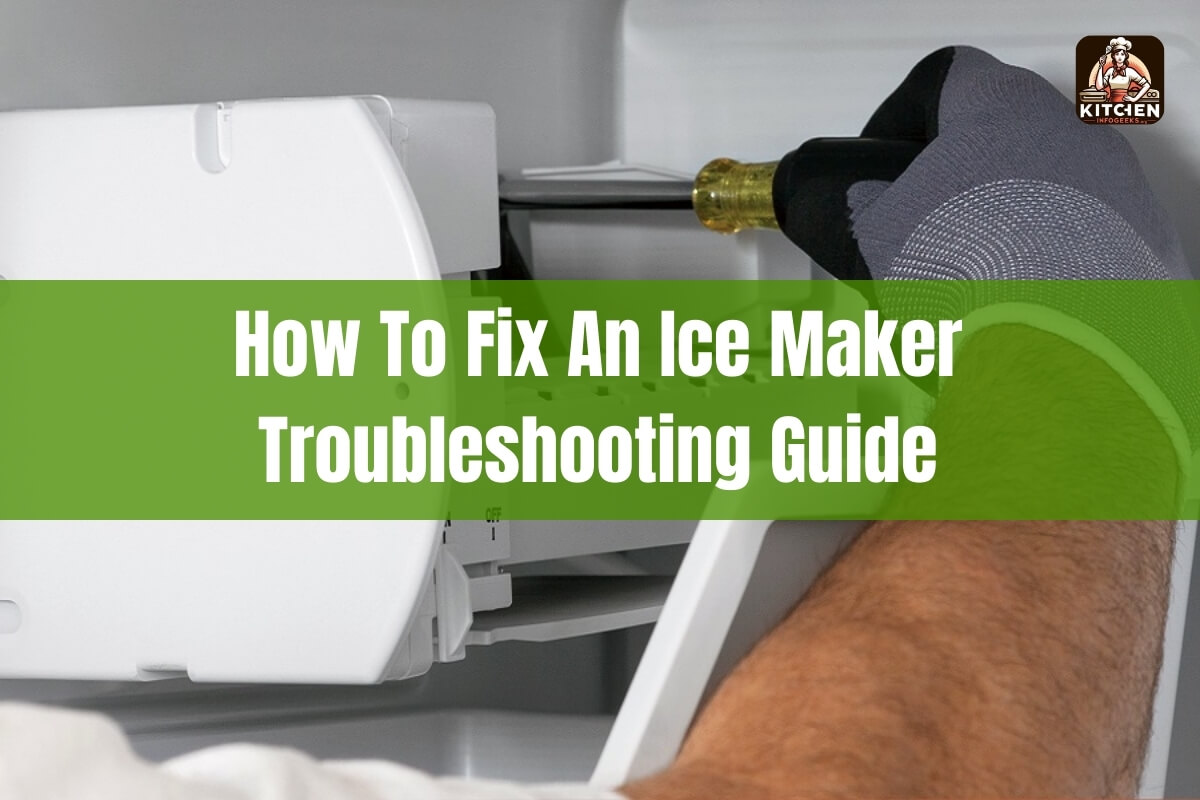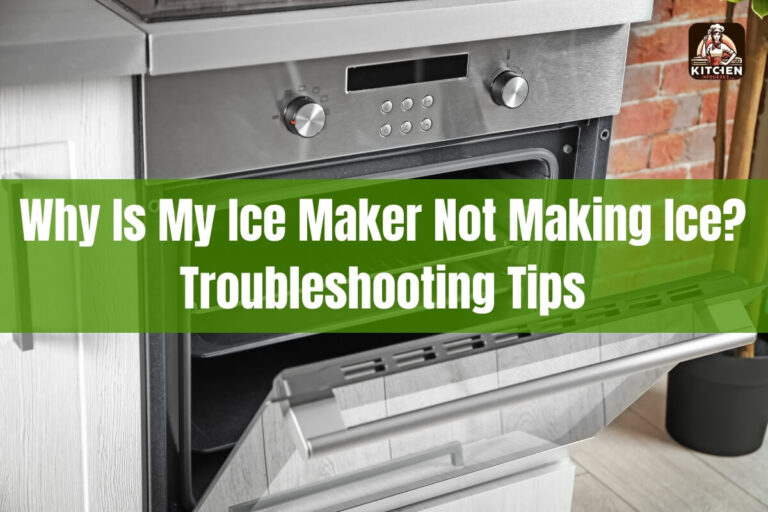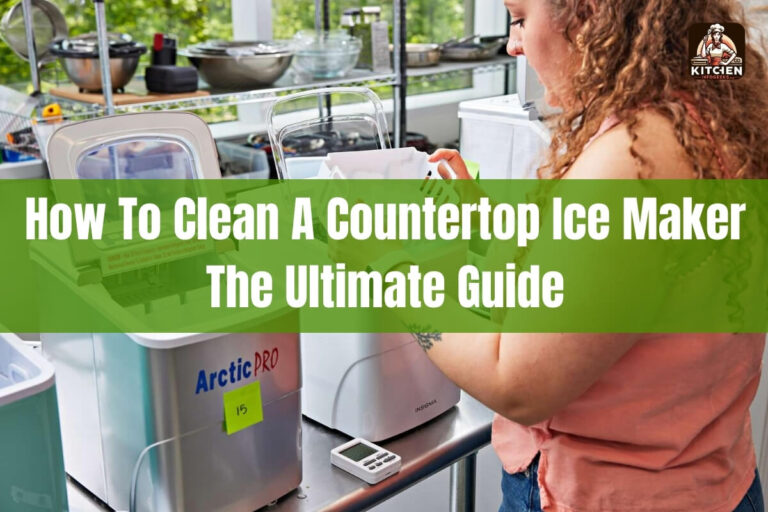
Are you struggling with a malfunctioning ice maker in your refrigerator? Don’t worry; you’re not alone. Ice makers can be temperamental, and various issues can prevent them from functioning correctly. In this comprehensive guide, we’ll cover everything you need to know about fixing an ice maker, from troubleshooting common problems to step-by-step solutions and maintenance tips.
An ice maker is a convenient appliance that provides a steady supply of fresh ice cubes, but when it breaks down, it can be frustrating. Fortunately, many ice maker problems can be resolved without calling a professional, saving you time and money.
Understanding How an Ice Maker Works
Before we dive into troubleshooting and fixing an ice maker, it’s essential to understand how it operates. An ice maker is a relatively simple mechanism that consists of a few key components:
- Water Line: This line supplies fresh water to the ice maker.
- Water Filter: Most refrigerators have a water filter that removes impurities from the water supply.
- Ice Mold: This is where the water freezes to form ice cubes.
- Control Arm: This arm detects when the ice bin is full and signals the ice maker to stop producing ice.
- Ejector Arm: This arm pushes the frozen ice cubes out of the mold and into the bin.
The ice maker works by drawing water from the water line, passing it through the filter, and filling the ice mold. Once the water freezes, the ejector arm pushes the ice cubes out of the mold and into the bin. The control arm ensures that the ice maker stops producing ice when the bin is full.
Troubleshooting Ice Maker Problems
Ice makers can encounter various issues, from not producing ice at all to producing misshapen or clumped cubes. Here are some common problems and their potential causes:
Not Producing Ice at All
If your ice maker isn’t producing any ice, there could be several reasons:
- Control Arm Issue: The control arm may be in the off position or stuck, preventing the ice maker from receiving the signal to produce ice.
- Water Supply Problem: There could be a kink or blockage in the water line, or the water supply valve may be turned off.
- Clogged Water Filter: A clogged water filter can restrict water flow to the ice maker.
- Freezer Temperature Issue: If the freezer temperature is too high, the water in the ice mold may not freeze properly.
Ice Maker Frozen or Not Ejecting Ice
If the ice maker is producing ice, but the cubes aren’t being ejected into the bin, the problem could be:
- Frozen Water Intake: The water intake line may be frozen, preventing water from entering the ice mold.
- Ejector Arm Malfunction: The ejector arm may be stuck or broken, preventing it from pushing the ice cubes out of the mold.
- Motor or Gearbox Issue: If the motor or gearbox responsible for the ejector arm’s movement is faulty, it can cause problems with ice ejection.
Ice Cubes Too Small or Too Large
If the ice cubes produced by your ice maker are consistently too small or too large, the issue could be:
- Water Dosage Adjustment: The amount of water entering the ice mold may need to be adjusted.
- Low Water Pressure: Low water pressure can result in smaller ice cubes.
- Clogged Water Line: A partially clogged water line can restrict water flow, leading to smaller ice cubes.
Step-by-Step Guides for Common Fixes
Now that we’ve covered some common ice maker problems and their potential causes, let’s dive into step-by-step solutions for fixing them.
Resetting the Ice Maker
If your ice maker isn’t producing ice, the first step is to try resetting it. Here’s how:
- Locate the ice maker’s power switch or reset button. This is usually found on the ice maker itself or on the control panel inside the freezer.
- Turn the ice maker off and then back on, or press and hold the reset button for a few seconds.
- Wait 24-48 hours for the ice maker to start producing ice again.
Changing the Water Filter
A clogged water filter can restrict water flow to the ice maker, preventing it from producing ice or causing smaller, misshapen cubes. Here’s how to change the water filter:
- Locate the water filter, which is usually found in the fresh food compartment or behind the refrigerator.
- Turn off the water supply to the refrigerator.
- Remove the old filter and replace it with a new one, following the manufacturer’s instructions.
- Turn the water supply back on and flush the new filter by running water from the dispenser for a few minutes.
Defrosting the Water Line
If the water line to the ice maker is frozen, it can prevent water from reaching the ice mold. Here’s how to defrost the water line:
- Unplug the refrigerator from the power source.
- Locate the water line behind the refrigerator or inside the freezer compartment.
- Use a hair dryer or heat gun to carefully apply heat to the frozen section of the water line. Be careful not to overheat or melt the line.
- Once the line is defrosted, plug the refrigerator back in and wait for the ice maker to start producing ice again.
Adjusting Water Flow and Dosage
If your ice cubes are consistently too small or too large, you may need to adjust the water flow or dosage to the ice mold. Here’s how:
- Locate the water dosage adjustment screw or lever on the ice maker. This is usually found behind a cover or panel.
- Turn the adjustment screw or lever in the appropriate direction (plus or minus) to increase or decrease the amount of water entering the ice mold.
- Test the ice maker and make further adjustments as needed until the ice cubes are the desired size.
Cleaning or Replacing Parts
In some cases, you may need to clean or replace certain parts of the ice maker to resolve issues. Here are some common parts that may need attention:
- Control Arm: If the control arm is stuck or broken, you may need to replace it.
- Ejector Arm: A faulty ejector arm can prevent ice cubes from being ejected into the bin. Clean or replace it as needed.
- Motor or Gearbox: If the motor or gearbox responsible for the ejector arm’s movement is faulty, it may need to be replaced.
- Ice Mold: Over time, the ice mold can accumulate mineral deposits or become damaged, preventing proper ice formation. Clean or replace the mold as needed.
Maintenance Tips for a Smooth-Running Ice Maker
Regular maintenance is key to keeping your ice maker running smoothly and preventing issues from occurring. Here are some tips:
- Clean the Ice Maker Regularly: Follow the manufacturer’s instructions for cleaning the ice maker, including the ice mold and ejector arm.
- Replace the Water Filter on Schedule: Most water filters need to be replaced every 6 months or as recommended by the manufacturer.
- Check Water Supply and Connections: Periodically inspect the water line and connections for kinks, leaks, or blockages.
- Monitor Freezer Temperature: Ensure that the freezer temperature is set between 0°F and 5°F (-18°C to -15°C) for optimal ice maker performance.
When to Call a Professional
While many ice maker issues can be resolved with some troubleshooting and DIY fixes, there are times when it’s best to call a professional. Here are some situations where professional repair may be necessary:
- If you’ve tried all the recommended solutions and the ice maker still isn’t working correctly.
- If you’re uncomfortable working with electrical components or water lines.
- If the problem seems to be related to the refrigerator’s overall cooling system or compressor.
- If you suspect a more complex issue, such as a faulty control board or wiring problem.
Calling a professional can be more expensive than DIY repairs, but it can save you time and ensure that the issue is properly resolved, preventing further damage or problems down the line.
Conclusion
A malfunctioning ice maker can be a frustrating problem, but with the right knowledge and approach, many issues can be resolved without professional assistance. By understanding how an ice maker works, troubleshooting common problems, and following step-by-step guides for fixes and maintenance, you can keep your ice maker running smoothly and enjoy a steady supply of fresh ice cubes.
Remember, regular maintenance is key to preventing issues and extending the lifespan of your ice maker.






